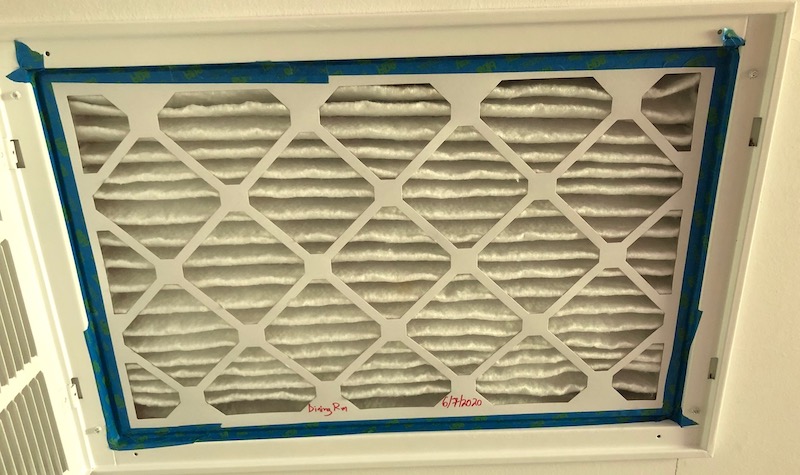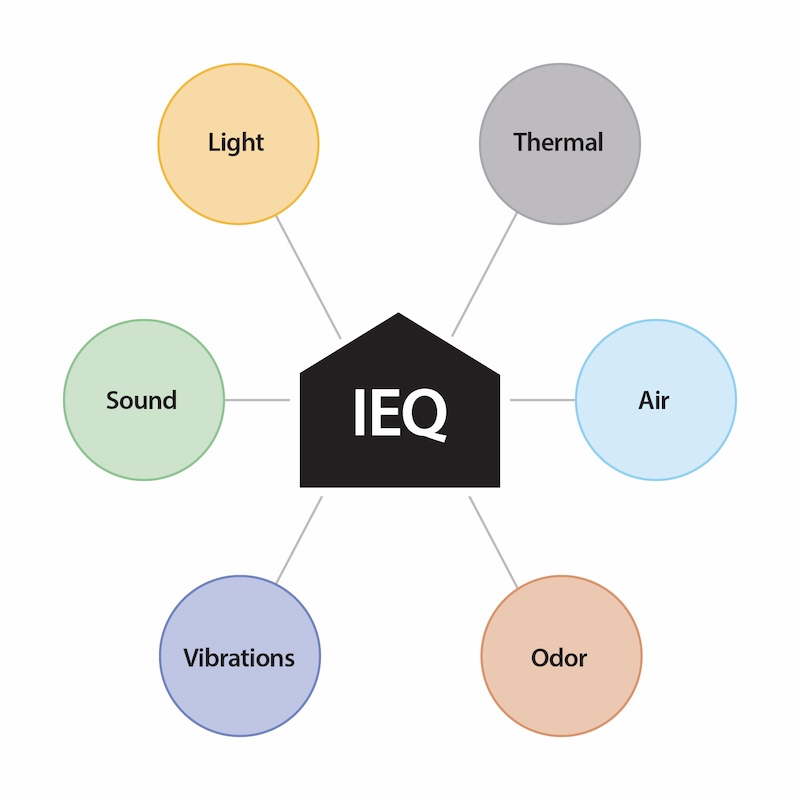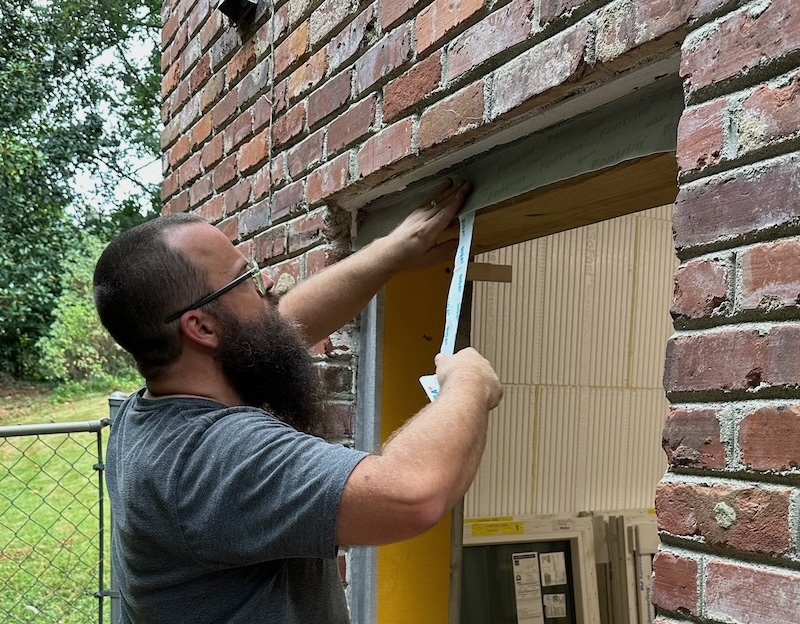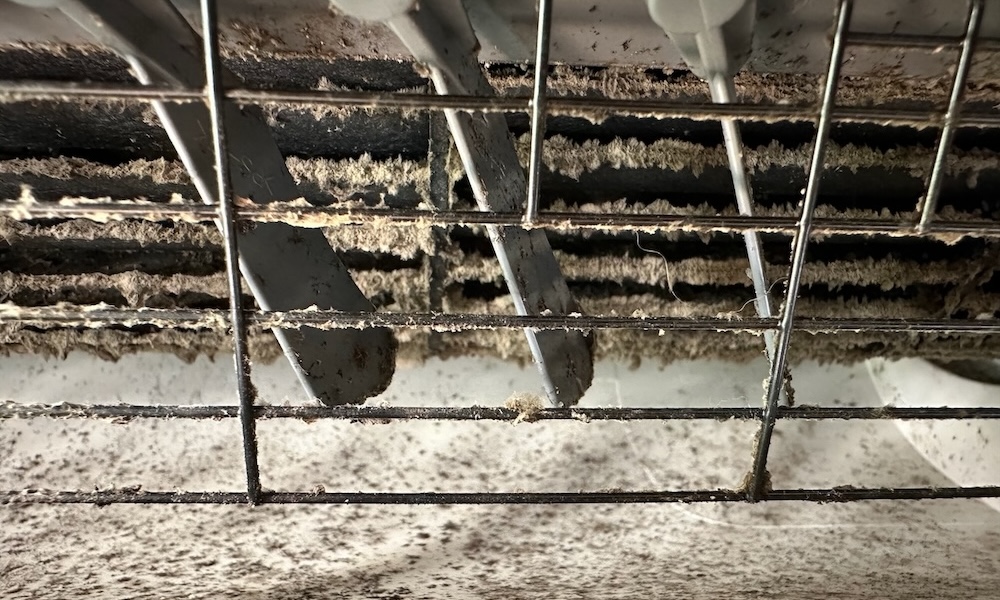Building Science News & Trends for 2025

Several years ago, I heard something really interesting at a talk by a self-described futurist. It’s an interesting “Futurists,” she said, “look at weak signals and try to figure out which ones will become strong signals.” I hadn’t thought much about what futurists do before that, but it made perfect sense. So let me apply that to the field of building science and explore some of the issues we’ve been talking about at Energy Vanguard over the past year. Not all of these are weak signals, but they’re all things that do seem to be growing in strength. Let’s jump in.
Indoor environmental quality
Indoor environmental quality is a term that applies to several factors that affect the health and well-being of the people who dwell in homes, offices, schools, and other buildings. The diagram below shows the six most commonly included qualities. Sadly, only one seems to be gaining traction: indoor air quality (IAQ).

Indoor air quality. Two things have driven the increased interest in IAQ: the COVID-19 pandemic and wildfires. People want better indoor air and they’re asking for whole-house ventilation and better filtration.
This is great! We know how to deliver these things. We know a heck of a lot about different indoor air pollutants and how to deal with them. Ventilation and filtration are two of the six primary methods to achieve good IAQ. The others are source control, moisture control, airtightness, and pressure balancing.
Thermal comfort is sorely lacking in a great many buildings, and so are attention to the other factors of indoor environmental quality. Maybe next year we’ll get to elevate one or more of the others.
Building enclosures
Rooflines insulated without spray foam. I’m seeing more and more reports about insulating rooflines above the roof deck with rigid insulation products like mineral wool or foam board. The majority of homes still have unconditioned attics. But in the high performance world, unconditioned buffer spaces are going away. Well, except for the attached garage.
I’ve even seen a new term recently for a house with rigid insulation on top of the roof deck is monopoly framing. The basic idea is that the roof rafters end at the walls, allowing continuous exterior insulation over that critical transition. Seattle home builder—and one of our clients—Sean Conta explained the details in an article on Green Building Advisor.
High-performance air-sealing and flashing tapes. Two of the big names here are Siga and Pro Clima. I got to use some of the Siga products in my basement renovation, and they’re amazing. See the article and video I did about their special corner flashing tape for windows. As airtightness requirements keep improving, products like these are becoming more important.

Mechanical systems
Makeup air. We’ve been doing a lot more makeup air systems in our designs lately. Airtight houses and oversized range hoods are the main reason, but sometimes it’s just because of an airtight house. Read my article on makeup air for more info.
Dehumidification. As building codes require more insulation and greater airtightness, moisture problems are becoming more common. And also increasing the potential for moisture problems is the fact that air conditioners have had to meet much higher efficiency requirements. That increases the problem because more efficient air conditioners don’t dehumidify as well as the old ones. (In fact, I heard one person jokingly say that the solution to humidity problems is to go back to SEER 10 air conditioners.) Anyway, these two trends have brought dehumidifiers into the spotlight. We specify a lot of them in our HVAC design jobs.
Dirty ductless units. Ductless mini-split heat pumps have gotten a lot of attention recently. They don’t filter well, and the blower wheel gets very cold. See the article and video I did when we cleaned my ductless unit last summer.

Air-to-water heat pumps. When you see the term “heat pump,” it almost always refers to an air-to-air heat pump. That is, in winter it picks up heat from the outdoor air and transfers it to the indoor air. The indoor part (the air handler) heats the air distributes the warm air through ducts. An air-to-water heat pump still pulls heat from the outdoor air, but it then puts that heat into water to distribute throughout the house. A huge advantage of these systems is that they’re package units. That means all the refrigerant is contained in the outdoor part of the system. The installer doesn’t have to connect refrigerant lines. There’s no refrigerant flowing through the house. And there’s less refrigerant. I think the refrigerant transition that’s happening now as well as climate concerns may drive more demand for these systems.
Refrigerant transition. New regulations are coming in that require us to move away from the current generation of refrigerants for air conditioners, heat pumps, and other mechanical systems. We’ve made great strides in getting rid of the refrigerants that destroy the ozone layer. Now we’re going to refrigerants with lower global warming potential. This will have some large ramifications, and we’re already having to deal with it in our HVAC design business here at Energy Vanguard.
Getting ducts into conditioned space. We’ve known for a long time that putting ducts in unconditioned attics, crawl spaces, and garages isn’t very smart. Most of our HVAC design clients are doing custom homes, and they’re mostly getting the ducts into the conditioned space one way or another.
Rheia duct system. This one is a spinoff from the previous topic. We’ve been getting more and more requests for the Rheia duct system from our HVAC design clients. We’ve had some talks with Rheia, and one of our designers, Alex DeSpain, is in the process of replacing his ducts with the Rheia system. We’ll have more to say about that after he has it installed and gets direct experience with it.
Miscellaneous
Smaller pipes for faster hot water. Maybe this is just because I’ve been so into this topic over the last few years. I reduced my wait times for hot water with a retrofit of three fixtures back in 2022. Then last year I expanded and improved my retrofit to include the basement as part of our basement renovation. I’ve done a bunch of things to the places my wife and I have lived over the past 15 years. This is the one change I’ve made that my wife loved!
As I write this, Gary Klein is staying with me for a couple of days. He’s here to talk about hot water at the Atlanta BS & Beer meeting later today. Tomorrow, we’re going to shoot some video. Stay tuned to our YouTube channel.
Ultrasonic airtightness testing. The blower door has ruled this realm since it was invented back in the 1970s, but that could change some day. I first heard about using ultrasonic sound waves to find air leakage a few years ago. It seemed a bit out there to me, and I forgot about it. In the past month, though, I’ve heard about from two different sources. See the article by Randy Williams at Green Building Advisor to learn more about this.
What’s missing?
I haven’t mentioned electrification, and that’s definitely a biggie. I think it’s going to keep rolling, but we’ll figure out how to incorporate it better. One easy way to take advantage of heat pumps in existing homes is to pair them with a furnace. I wrote about these dual-fuel systems a while back, and it can help us get their quicker.
Similarly, I glossed over heat pump water heaters and induction cooktops. What else have I missed?

One thing that wasn’t missing for my New Year celebration, though, was Possum Drop. It’s a local party I’ve been attending since 2006, and it was another spectacular year. The possum dropped at midnight, and all is well. OK, maybe not “all” but at least the hosts’ house once again remained standing next to the ashes of the giant possum. (No, it’s not a real possum, and no possums were hurt.)
Happy New Year!
Allison A. Bailes III, PhD is a speaker, writer, building science consultant, and the founder of Energy Vanguard in Decatur, Georgia. He has a doctorate in physics and is the author of a bestselling book on building science. He also writes the Energy Vanguard Blog. For more updates, you can follow Allison on LinkedIn and subscribe to Energy Vanguard’s weekly newsletter and YouTube channel.
Related Articles
Faster Hot Water Can Change Your Life
How Airtight Can You Make an Older House?
Basement Renovation in a 1961 Home
Comments are welcome and moderated. Your comment will appear below after approval. To control spam, we close comments after one year.

Rheia system seems interesting. It’s appears to be a Zehnder-esque way to design/install a HVAC system.
Assuming it performs as advertised I’d absolutely reconsider buying a home from a production builder who used this product.
This is a timely article for our situation – we are moving into new 3000 SF ICF home completed late last month – major elements / winners:
1) I did the Man J / D work myself – I found a code exception that let me reuse a pre-SEER2 Carrier Greenspeed heat pump system salvaged from an earlier home – I had my crew install a 4 zone duct system. System is 3 tons, Man J worked out to just under 2.5.
2) I fought hard for and got a full standing headroom mechanical passageway and space in the attic for AHU, heat pump water heater, central vac, and dehu. I went with an oversized 30×54 pull down stair in the garage to access it all.
3) I have done a complete 180 on separate central dehus – I started my HVAC career in 2009 believing them to be an expensive and energy intense bandaid for sloppy building envelopes and oversized code min single stage heat pumps. Now I believe they should be a part of any high performance dwelling. I have an interesting experiment underway with our 120 pint Trane-branded Santa Fe – I ducted its discharge into shower and bathing rooms to both warm and actively dry them.
I’m not sure I agree with the statement that new air conditioners don’t dehumidify as well as old ones – I think what we are seeing, at least in the southeast, is a combination of reduced sensible load owing to better windows and envelopes, and an increase in latent load owing to increased wet bulb / dewpoint temperatures. When I moved to north Florida in the mid 90s, summer dewpoints ran in the 71-73 range…now it is common to experience 75-78 in late summer – a function of being surrounded by warmer ocean water. The decrease in load sensible heat ratio makes it difficult to control humidity without separate dehumidification.
4) Throwback – we have a centrally located Jotul woodstove – despite a streak of frosty nights in north Florida, we haven’t used HVAC heat mode – the stove plus slow AHU fan operation have kept all zones 70-75*F
5) Attic has closed cell spray foam – the only kind I’ll own. In a departure from previous practice, I invested (considerably) in air sealing the pressure envelope prior to foam being blown – got the envelope down to 1ACH50 before foam…my Passive-house crazy architect brother-in-law talked me into that.
6) I included the garage in the pressure envelope testing by having the builder close the bays with temporary stud and OSB walls. The garage is its own envelope per code, but we park only EVs in it, so IEQ there is better than most. All our yard gear is bettery electric, so no fumes from those items, either.
7) I mostly lost the skinny hot water tubing battle. The attic HPWH serves the primary suite relatively quickly and well, but some outlying fixtures take 2+ minutes to get hot water. I’m mulling improvements to that…some sort of hybrid manifold system.
All exciting topics. Under building enclosures, you mention “…The majority of homes still have unconditioned attics. But in the high performance world, unconditioned buffer spaces are going away. Well, except for the attached garage.”
Perhaps we should separate two types of unconditioned spaces: efficient buffers and inefficient buffers. Spaces such as unconditioned, but insulated and air-sealed garages (as well air-sealed as garage doors allow), or crawlspaces, or storage areas perform much better than vented attics or vented crawlspaces. Actually those vented varieties can hardly be called “buffers” at all.